How I Use My Ceramic Paint Palette
I recently received a topic submission from a reader on how I use my ceramic paint palette with gouache. How do I mix new colors on top of dried paint? How often do I have to wash it? Do I wipe it clean after each use?
I thought this was a really good question, and a perfect topic for today’s blog. Thanks Kate!
About My Palette
Disposable plates as palettes
I love going antiquing, and I’m always looking for new finds. One day, about five years ago, I came across a gold-rimmed milk glass egg plate. I instantly thought it looked like a paint palette. At the time, I was using a round plastic palette from the art store. It worked fine, but wasn’t anything special. While I’d seen artists use ceramic palettes on Instagram, I’d never seen anyone use a palette like this. I thought, “wow, I would feel pretty fancy painting with this every day.” I almost put it back, because I thought it was too nice to use with paint. But then again, why shouldn’t painting feel special?
So I bought it as a present to myself. I’ve since bought five more of these palettes, and I haven’t turned back. They usually range from $12-25 depending on the condition. An added bonus is that my palettes look great in process images. They’ve become my unique signature in my work and photos. Sometimes I’ll see another artist online using my same palette and I think “wow, I started that trend!”
Do I always use this palette? Mostly, except when I travel. On the go, I like using disposable plates. They’re lighter and I don’t need to clean them when staying in a hotel room. I typically buy the plastic Chinet ones. I like a gold-rimmed plastic plate, because they remind me of my ceramic palettes.
To me, as long as a paint palette has a white, smooth, sturdy surface, it works. I’ve tried using paper and styrofoam plates, but I don’t like the surface as much as a ceramic or plastic plate.
How I Use My Palettes
The best feeling is getting out a brand new palette. I love all the white space I have to work with. I do not clean my palette after every use. Far from it. For weeks, I fill up every square inch with paint until I can’t fit any more. At first, when the palette is clean, I use the wells/egg indents to mix specific colors. Then, all bets are off. I’m using the entirety of the plate to mix any and every color. There’s no method to my madness.
When I’m squeezing new gouache onto the palette, I’m usually looking for white space to mix my colors. Sometimes, I’ll mix a color on top of a dried area of gouache that’s a similar color. However, I’ll never mix a color on top of dried paint of a different color. Since gouache does rewet, this would muddy my paints.
Rewetting gouache works best when I need just a little bit of a color. I’ll add water to a dried shade to accent a piece. However, if I need to fill a large area with color, it’s easier to mix new paint. You’ll find rewetting paint just doesn’t compare to fresh paint. It’s thinner and less saturated than fresh paint. You loose a lot of opacity too. You don’t want to this too often, unless you’re going for a look more similar to watercolors.
Rewetting paint also works really well when I mix wet paint with a dried shade. For instance, I’ll often mix wet white paint with dried shades to make pastels. Or I’ll add black to a dried shade to get a navy or maroon.
Below, I’ve included some of the many cameos my ceramic paint palette has made over the years:
How I Clean my Palettes
I’ll use my palette for as long as I possibly can. Usually a couple of weeks, but sometimes longer. I know I’m done when there’s hardly any white space left and using the palette starts to feel difficult. When this happens, I’ll grab an identical ceramic palette from my “clean stack.” I’ll put the old palette in my “dirty stack.” I let the dirty palettes stack up until I have time to wash them in bulk. I usually wash them when I’m on my last clean palette. This is why it’s helpful to have multiples - less washing.
To wash my ceramic palettes, I let them soak in warm water and soap first. Sometimes I soak them for an hour. Sometimes 24 hours. Letting them soak longer doesn’t ruin the palettes. Presoaking them helps the paint to soften and come loose. Then, I’ll take a soap-filled scrub brush (used for my paint palettes only), and wash them under warm water. Since gouache is water soluble, the paint comes off pretty easily. I always try to go easy on the gold-rimmed parts of the plate, since the coating can chip.
I wash my palettes in my laundry room sink (the least nice sink in our house), because it’s a messy job. When I’m done, I dry the palettes with paper towels and restack them in my “clean stack” for their next use.
Best feeling ever - having a stack of clean ceramic palettes to use.
Any more questions about my palettes? Let me know in the comments below!


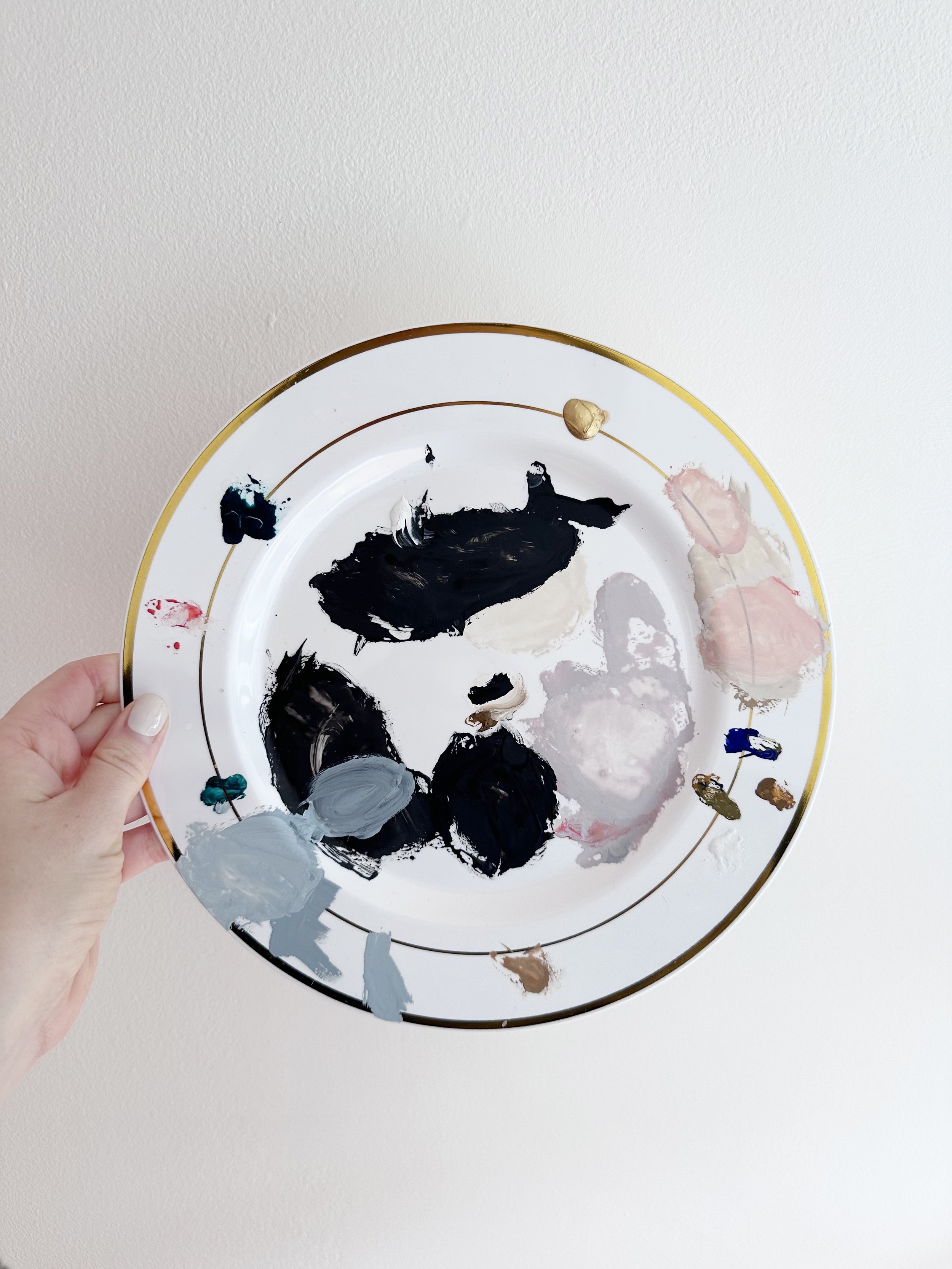
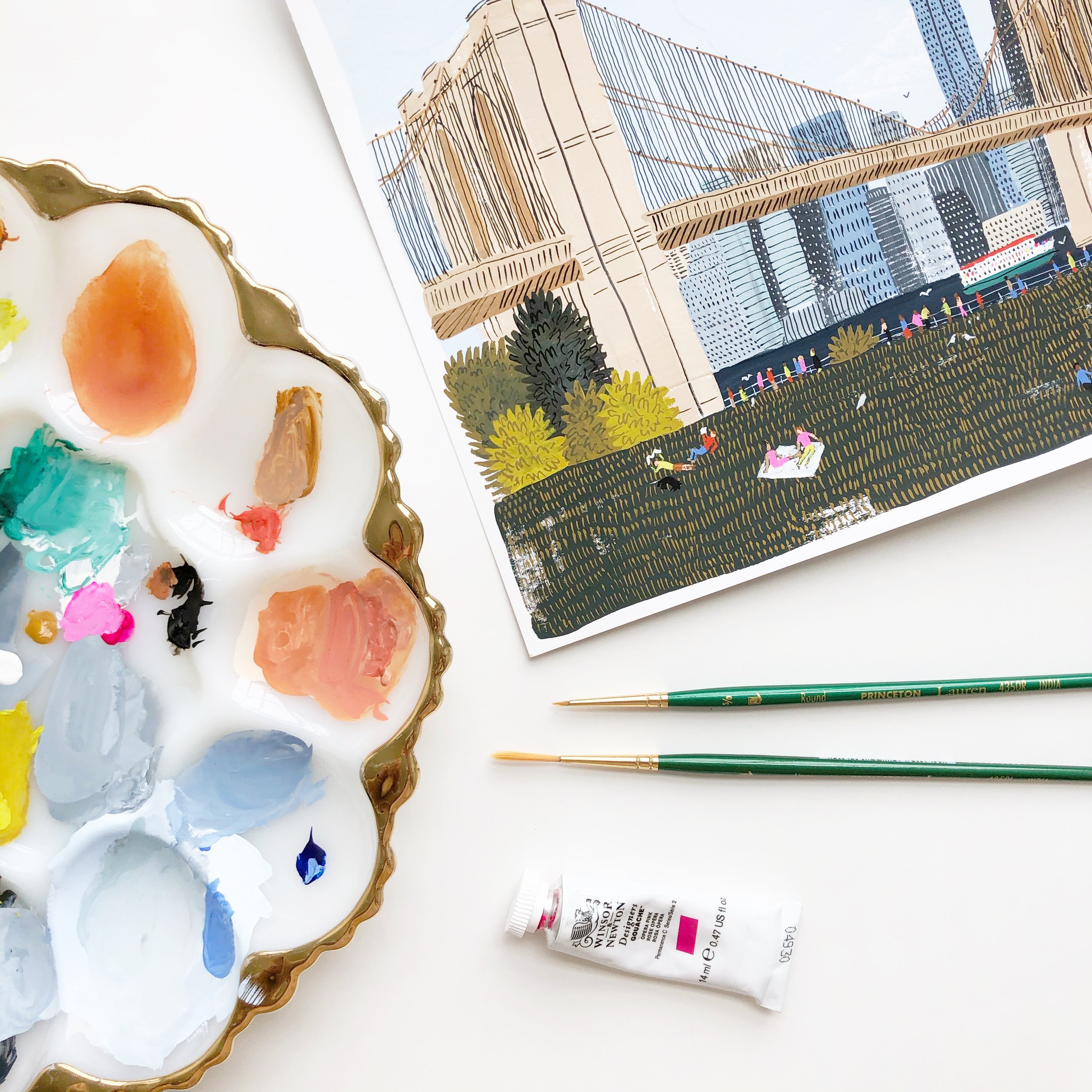
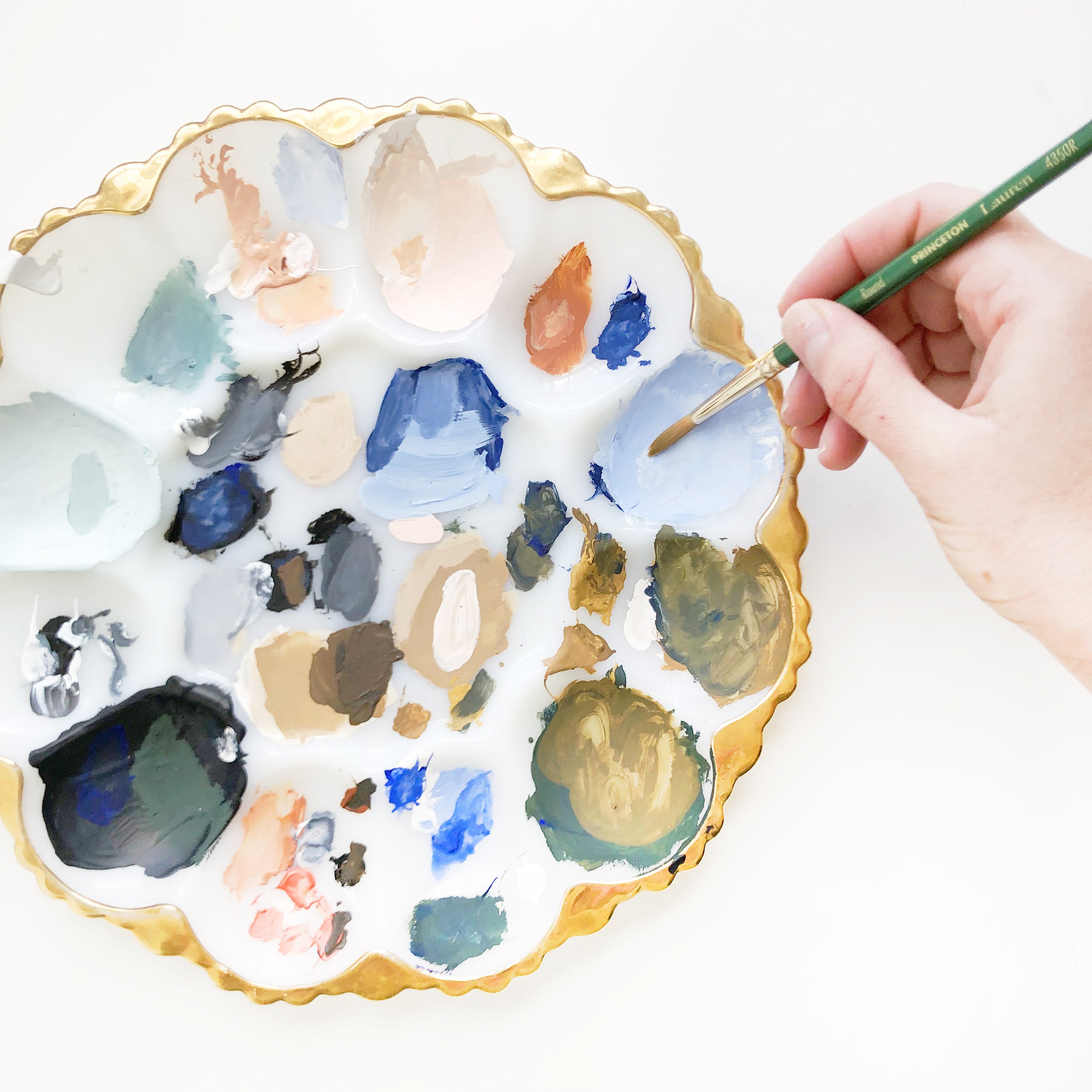
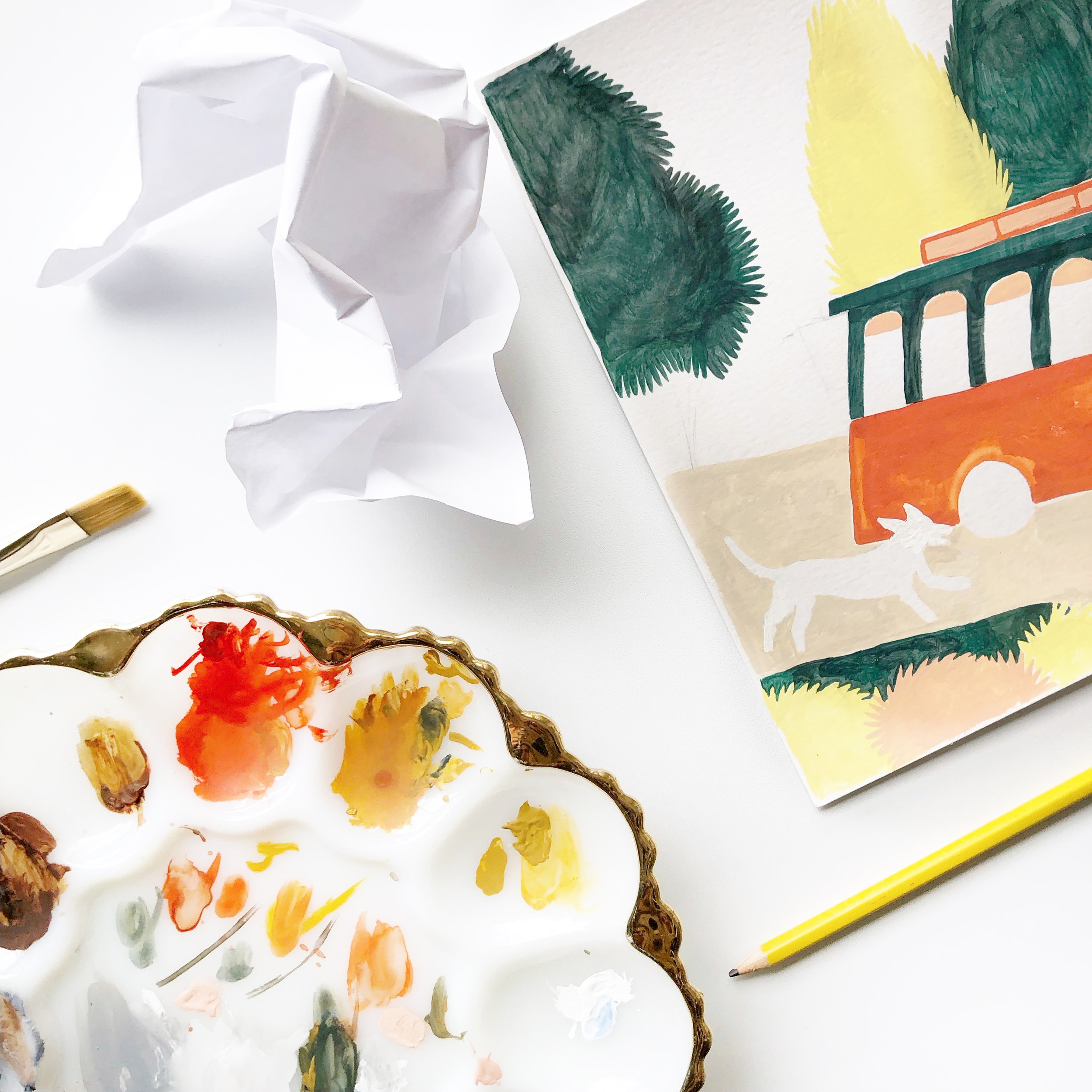

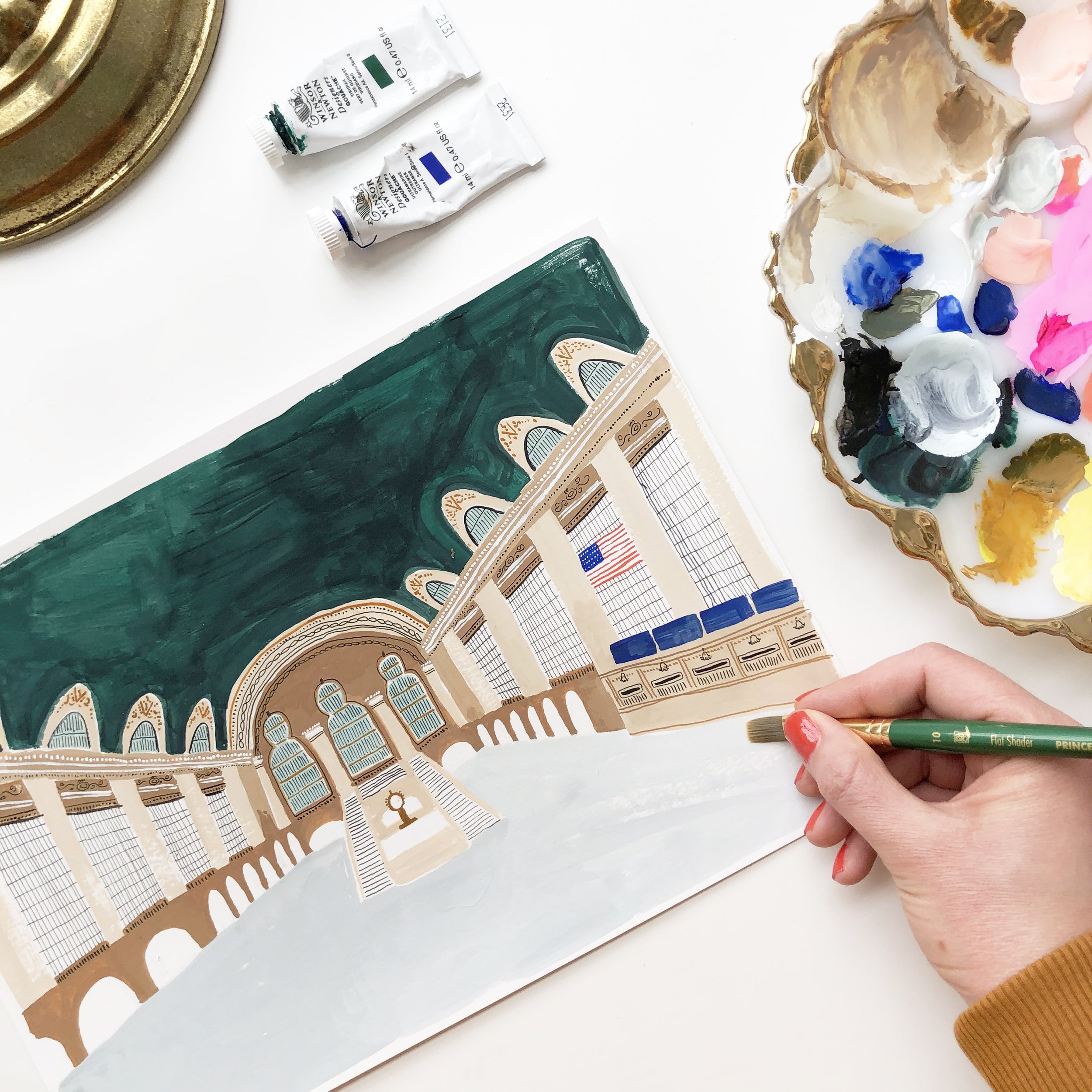
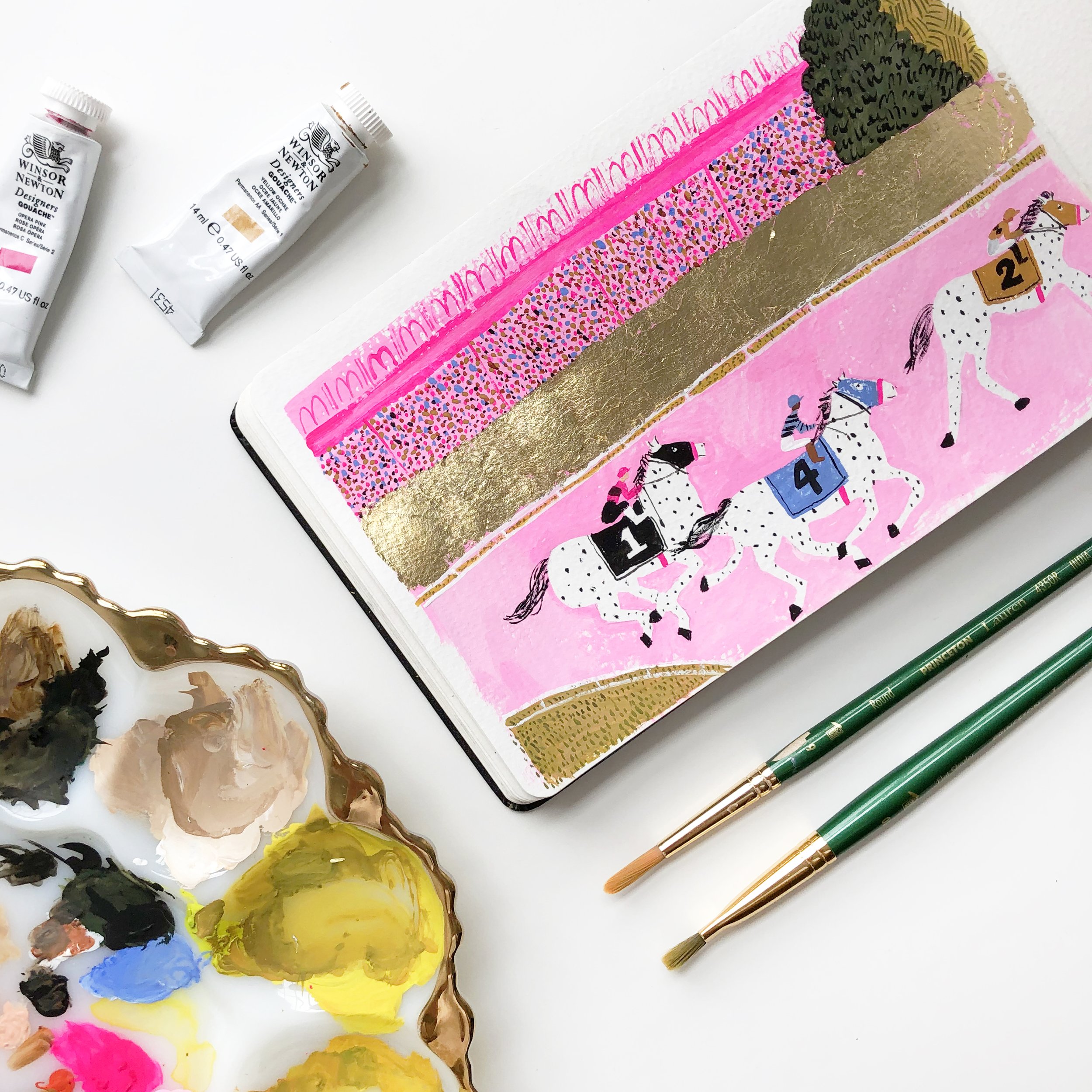

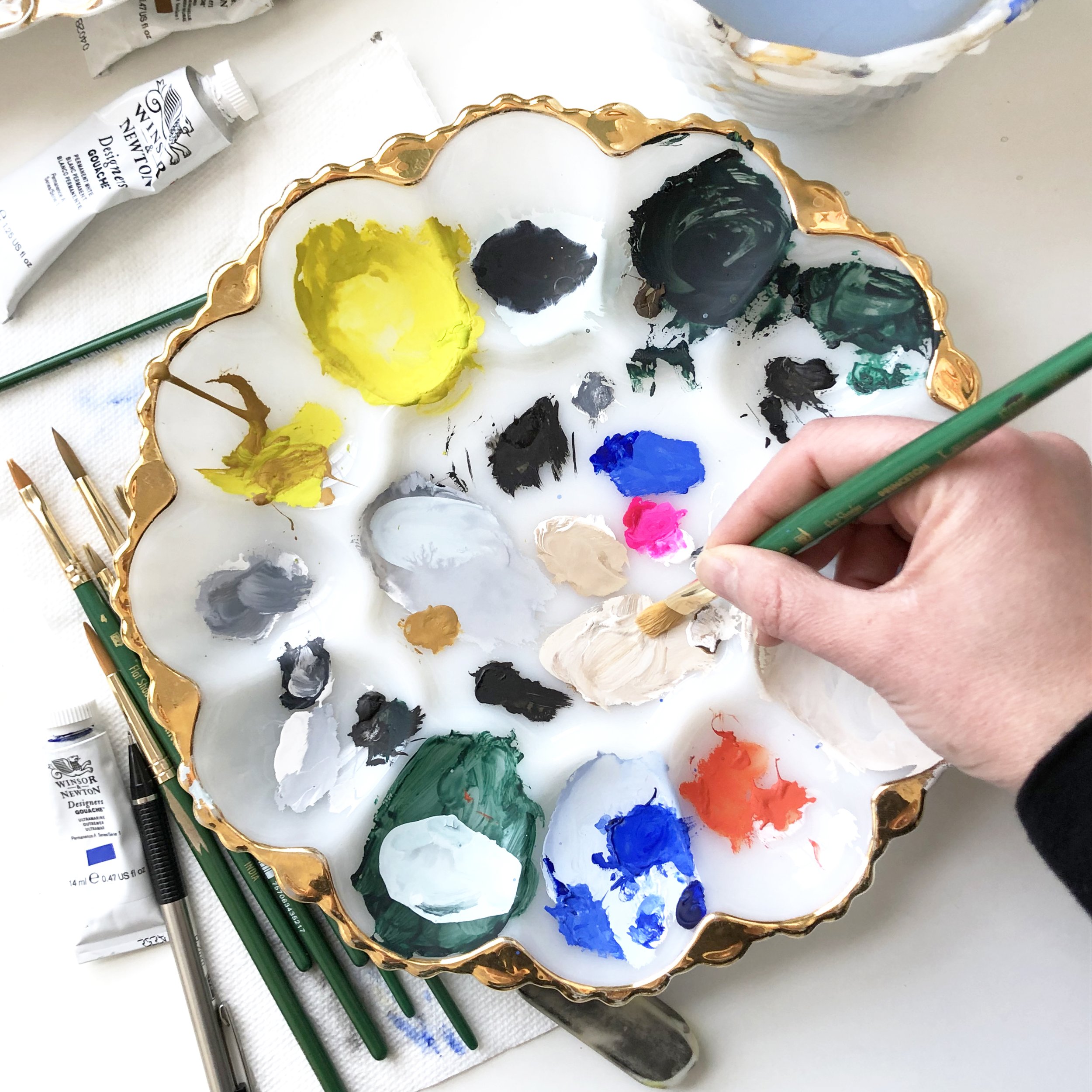


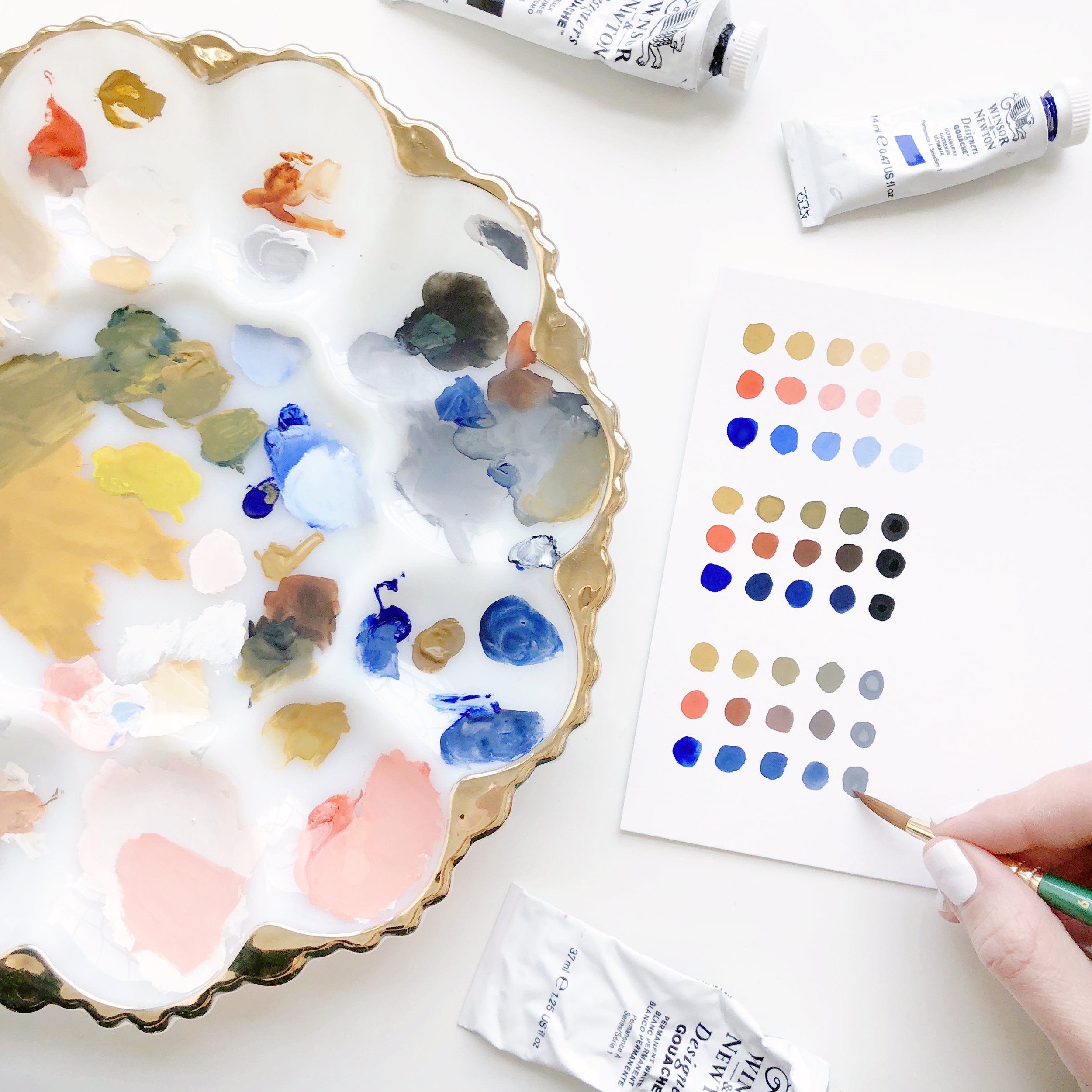
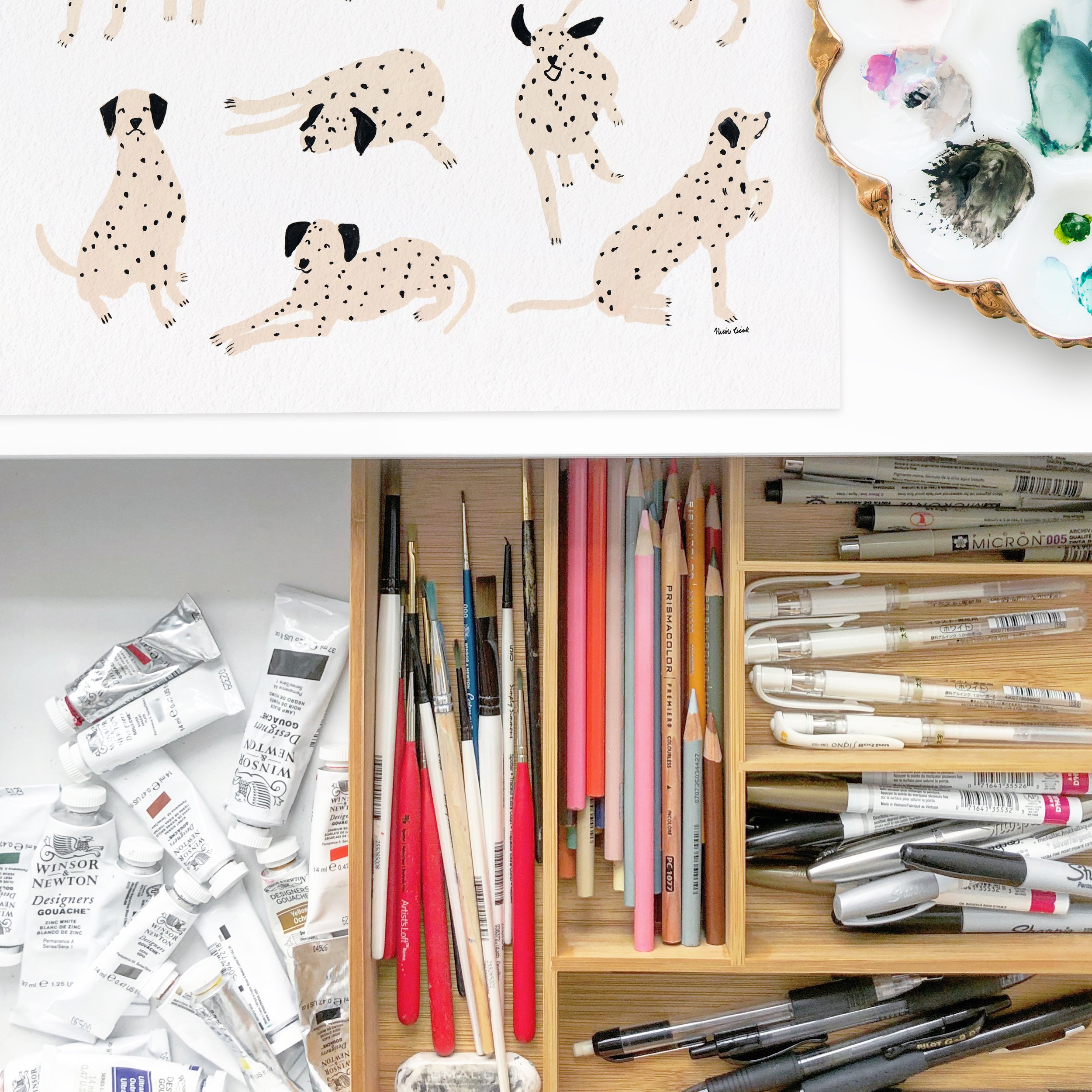









Thanks for stopping by! I’m an illustrator & writer. I’ve been running my own creative business since 2015. My mission is to help artists find their unique creative voice, build positive habits, and do what they love for a living.